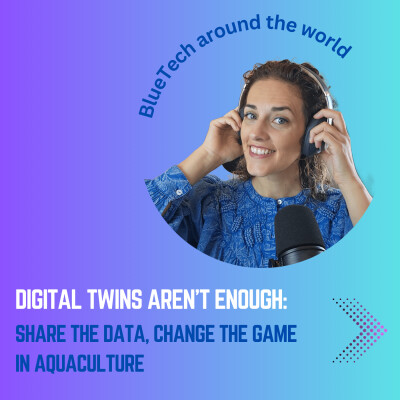Description
Can we protect ships, offshore wind, and aquaculture without harming marine ecosystems?
In this episode of BlueTech Around the World, we dive into the hidden yet costly challenge of marine biofouling.
The build-up of algae, barnacles, and other organisms on underwater surfaces. This natural process drastically increases fuel consumption, greenhouse gas emissions, and maintenance costs for the entire maritime industry.
Yet, traditional antifouling paints often come with toxic side effects for marine life. So how can we innovate smarter, greener solutions?
To unpack this complex topic and share real-world insights, I’m joined by Professor Christine Bressy, a leading scientist in antifouling innovation and head of the MAPIEM laboratory in Toulon, France.
With over 28 years of experience bridging chemistry, environmental science, and industrial applications, Christine shares how her team is developing biocide-free coatings, biomimetic surfaces, and integrated cleaning technologies to protect vessels and structures while respecting ocean health.
🔹 In this episode:
• What is marine biofouling and why it costs billions every year
• The environmental impact of biocidal coatings and global regulations
• How antifouling technologies work: biocidal vs. fouling-release paints
• Challenges for static infrastructures like offshore wind and aquaculture
• Emerging innovations: smart polymers, shark-skin inspired surfaces, robots & real-time monitoring
• What’s next: biopolymer-based, biodegradable, silicone-free coatings
• Advice for young ocean innovators entering this critical field
Key question:
How can we balance efficient maritime operations with ocean health, using new antifouling technologies that prevent biofouling without harming marine ecosystems?
Thank you for listening to BlueTech Around the World! 🌊✨
💡 Resources and Links:
Follow us on LinkedIn: BlueTech Podcast
Connect with us on Instagram: @bluetechpodcast
Watch our episodes on YouTube: BlueTech Around the World
Visit our Website: https://www.bluetech-podcast.com/
Don’t forget to subscribe, leave a review, and share your favorite episodes to help us spotlight the incredible innovations shaping our oceans. 🌊
Stay tuned for more inspiring stories and cutting-edge blue technologies!
BlueTech Around the World — the Blue Connection Podcast.
Hosted on Ausha. See ausha.co/privacy-policy for more information.





